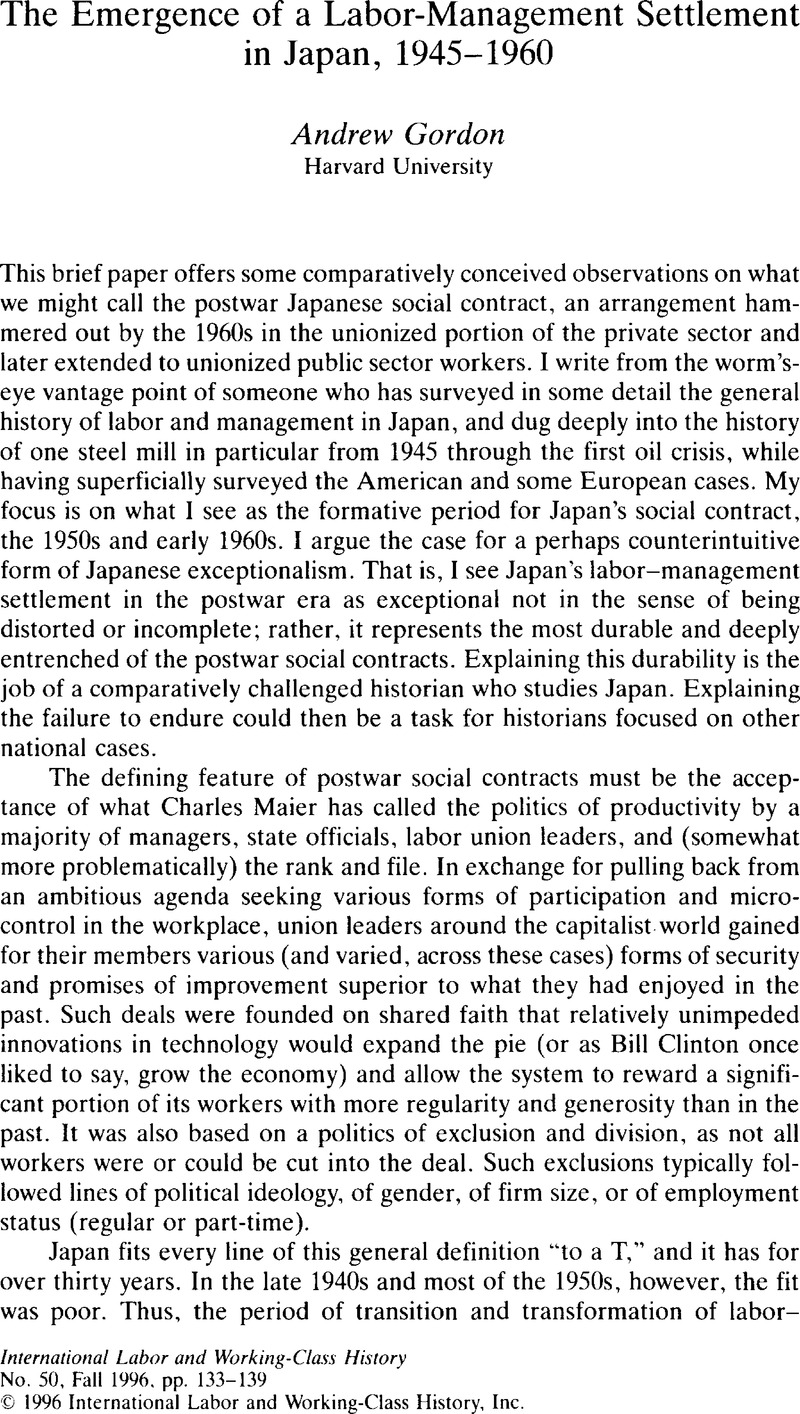No CrossRef data available.
Article contents
The Emergence of a Labor-Management Settlement in Japan, 1945–1960
Published online by Cambridge University Press: 16 December 2008
Abstract
An abstract is not available for this content so a preview has been provided. Please use the Get access link above for information on how to access this content.

- Type
- Scholarly Discussion: The Postwar Social Contract
- Information
- Copyright
- Copyright © International Labor and Working-Class History, Inc. 1996
References
REFERENCES
Cole, Robert E.Strategies for Learning: Small-Group Activities in American, Japanese, and Swedish Industry, Berkeley, 1989.CrossRefGoogle Scholar
Cusumano, Michael. The Japanse Automobile Industry: Technology and Management at Nissan and Toyota. Cambridge, 1985.Google Scholar
Gordon, Andrew. “Contests for the Workplace.” In Postwar Japan as History. ed. Gordon, Andrew. Berkeley, 1993.CrossRefGoogle Scholar
Maier, Charles. “The Politics of Productivity: Foundations of American International Economic Policy after World War II.” In Between Power and Plenty: Foreign Economic Policies of the Advanced Industrial States, ed. Katzenstein, Peter J.. Madison, 1978.Google Scholar




